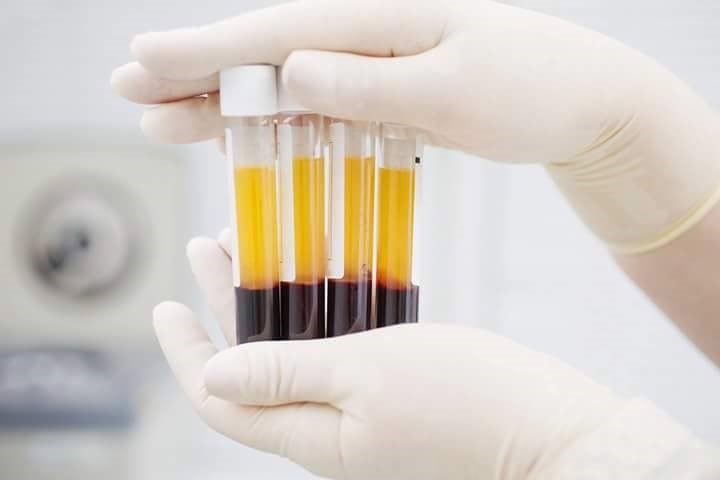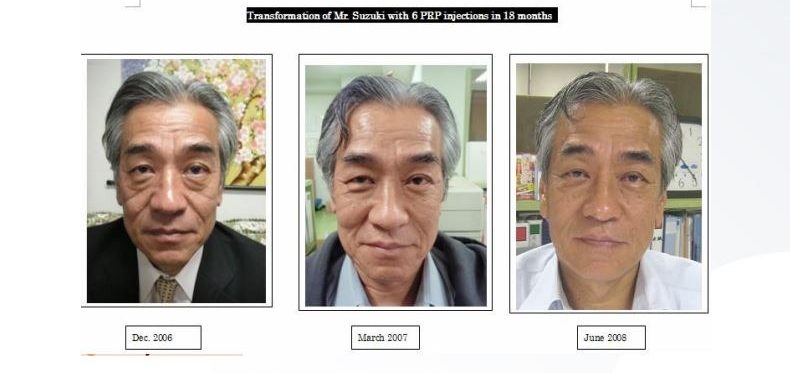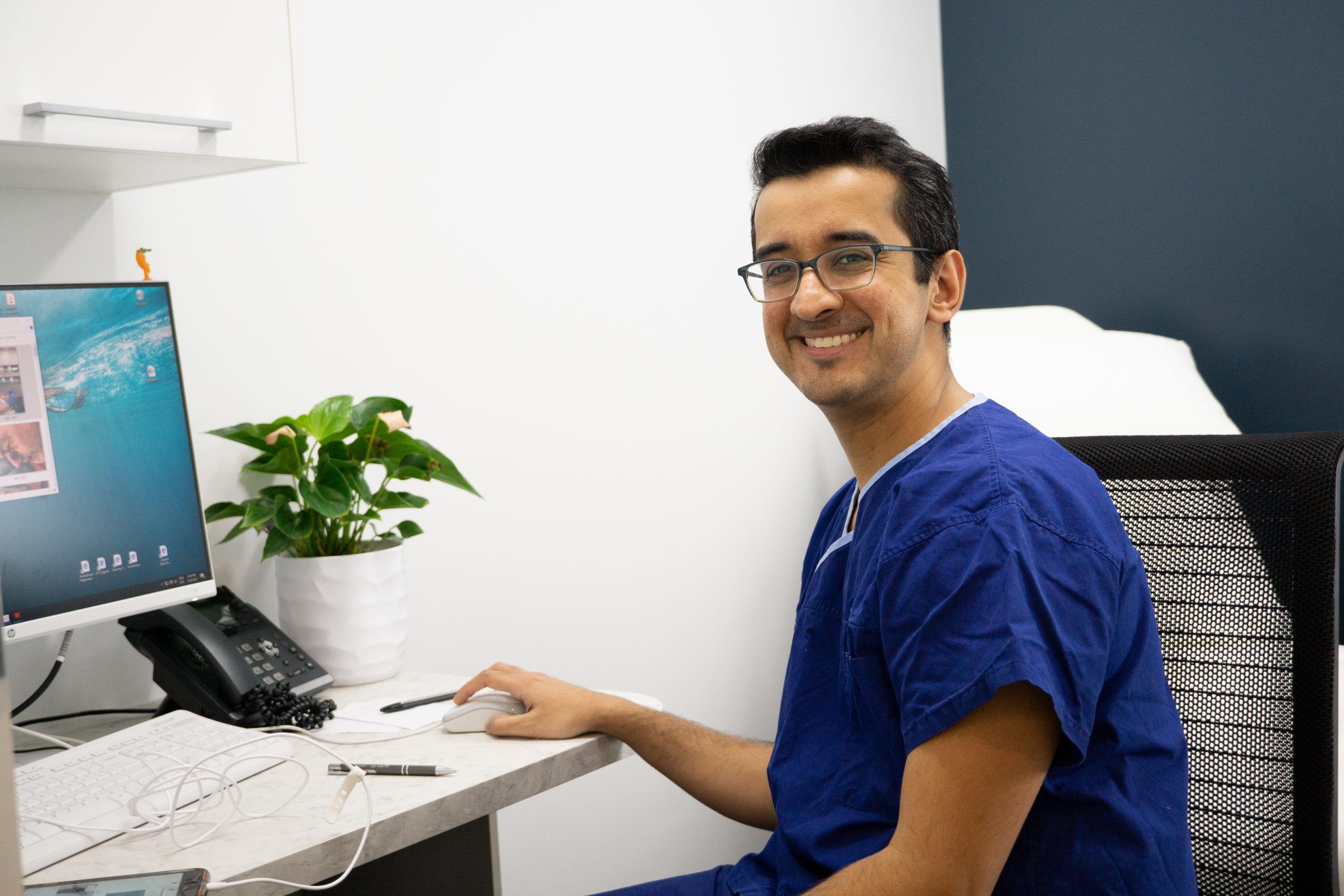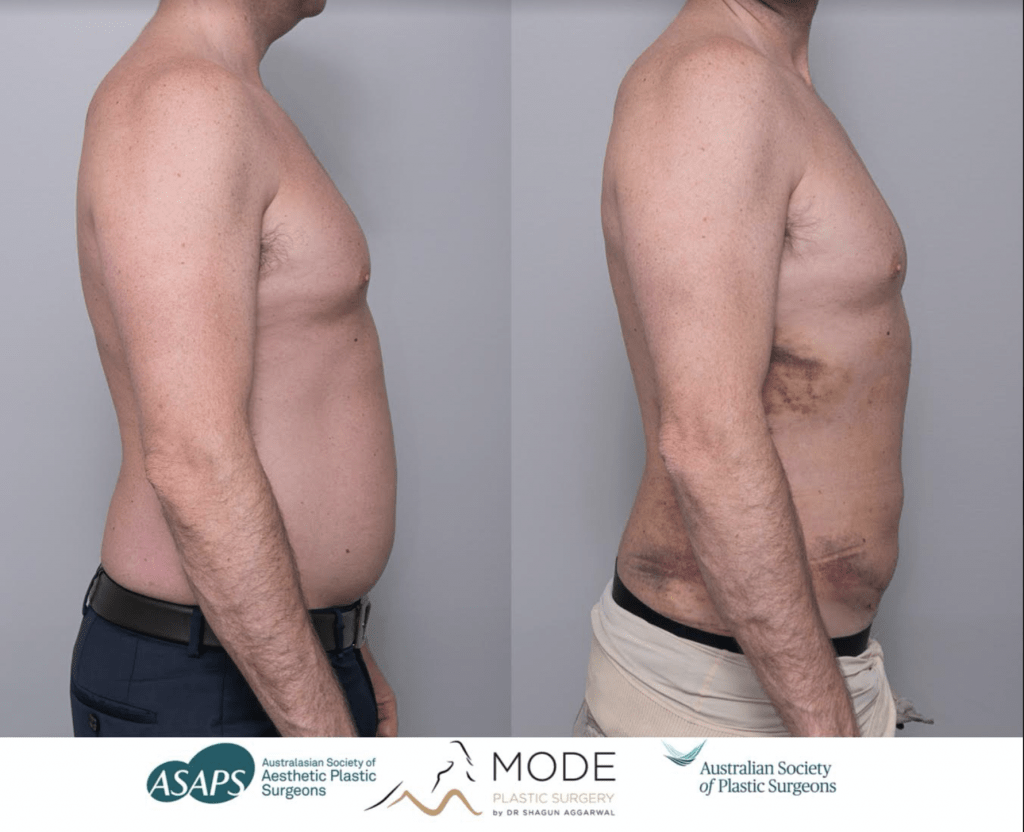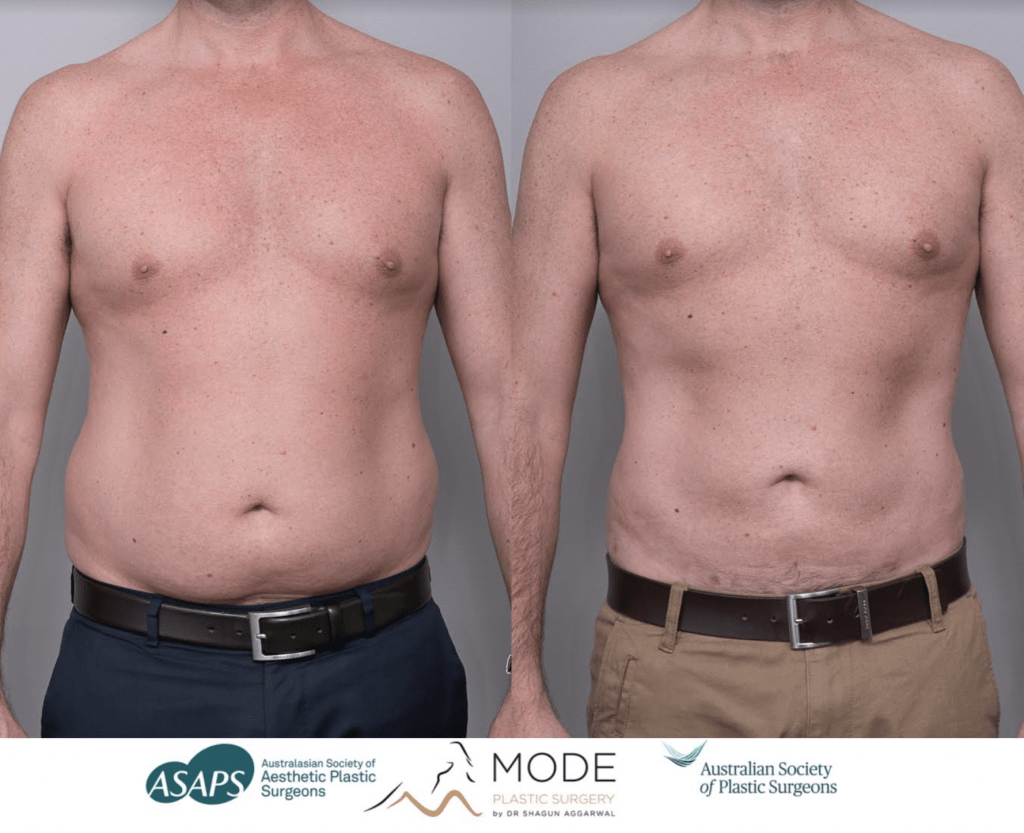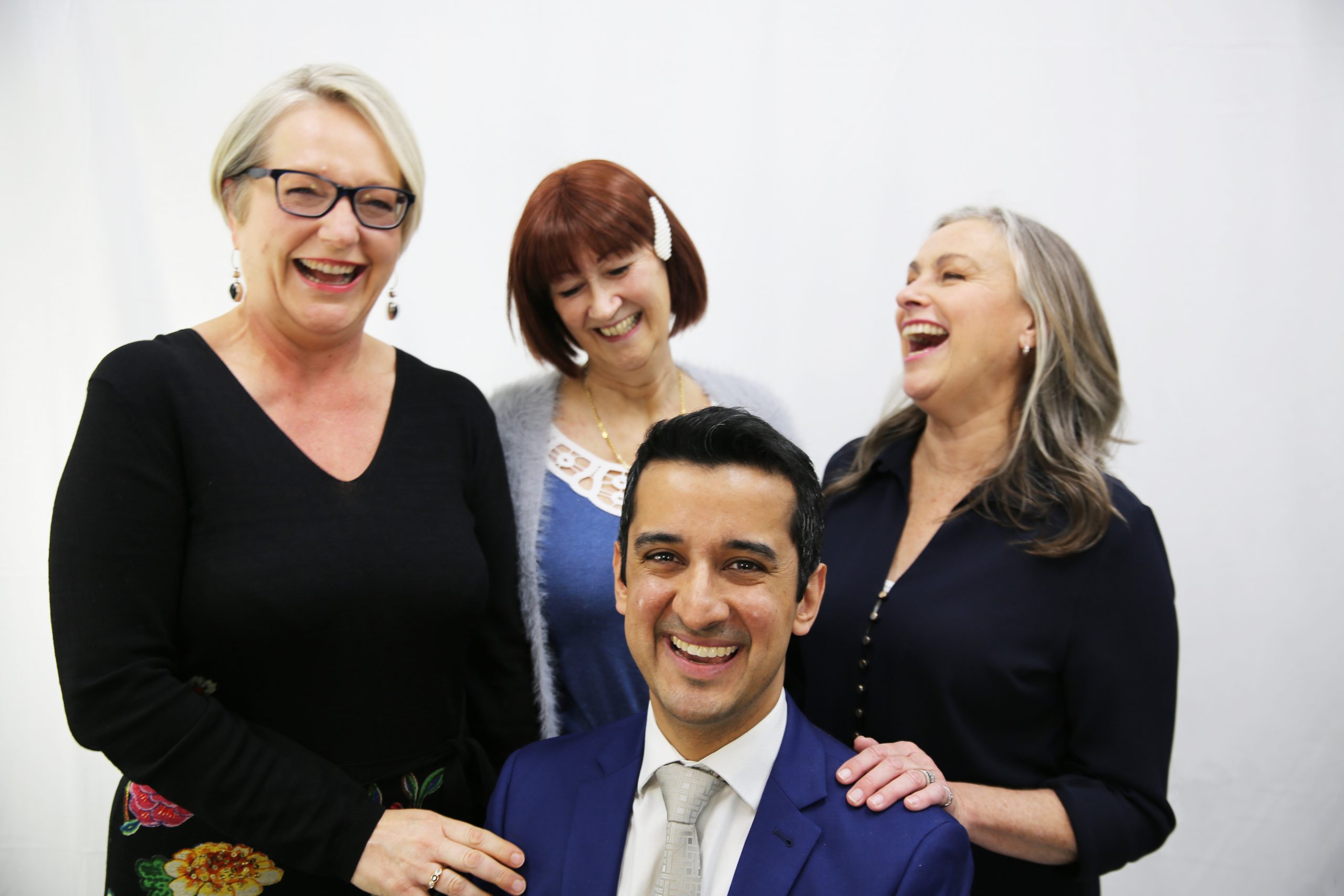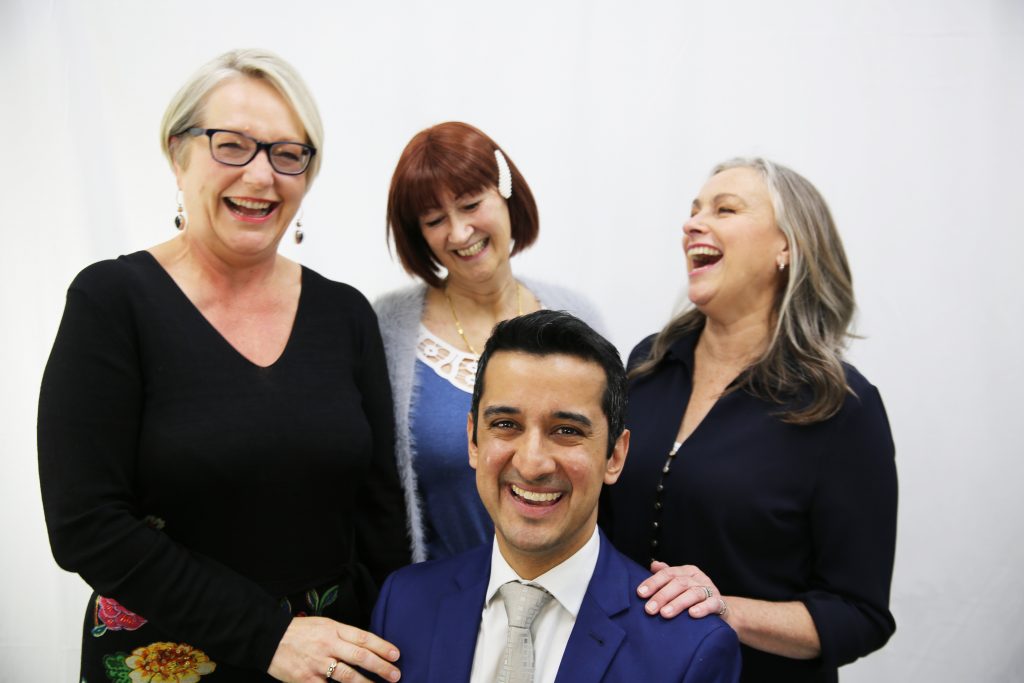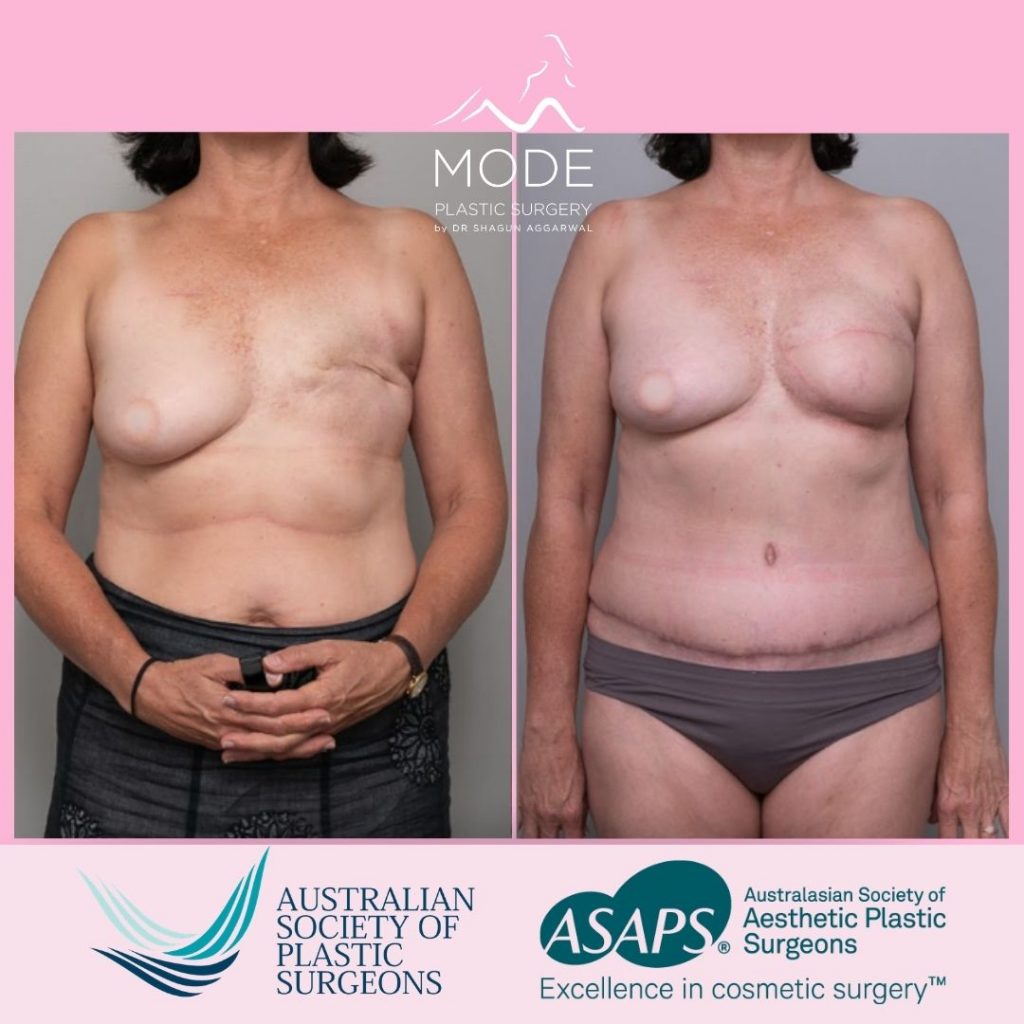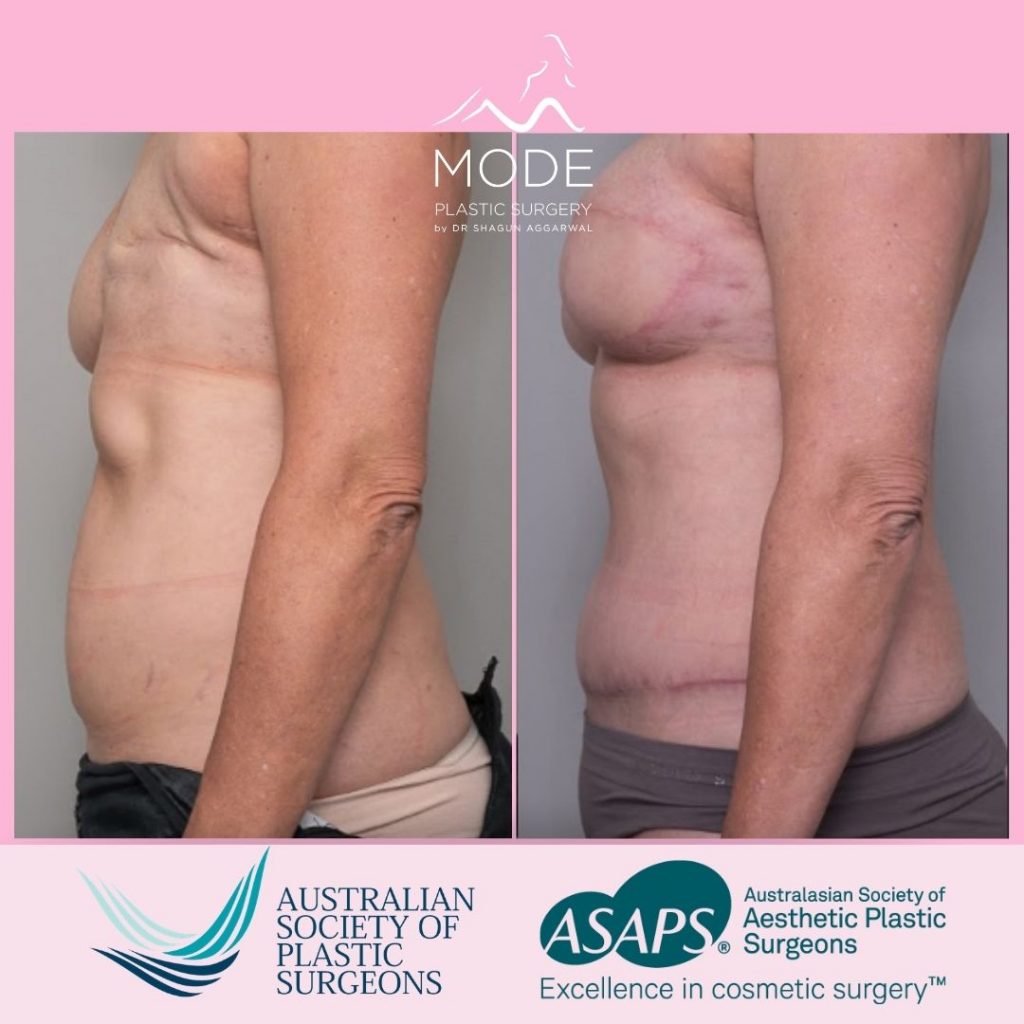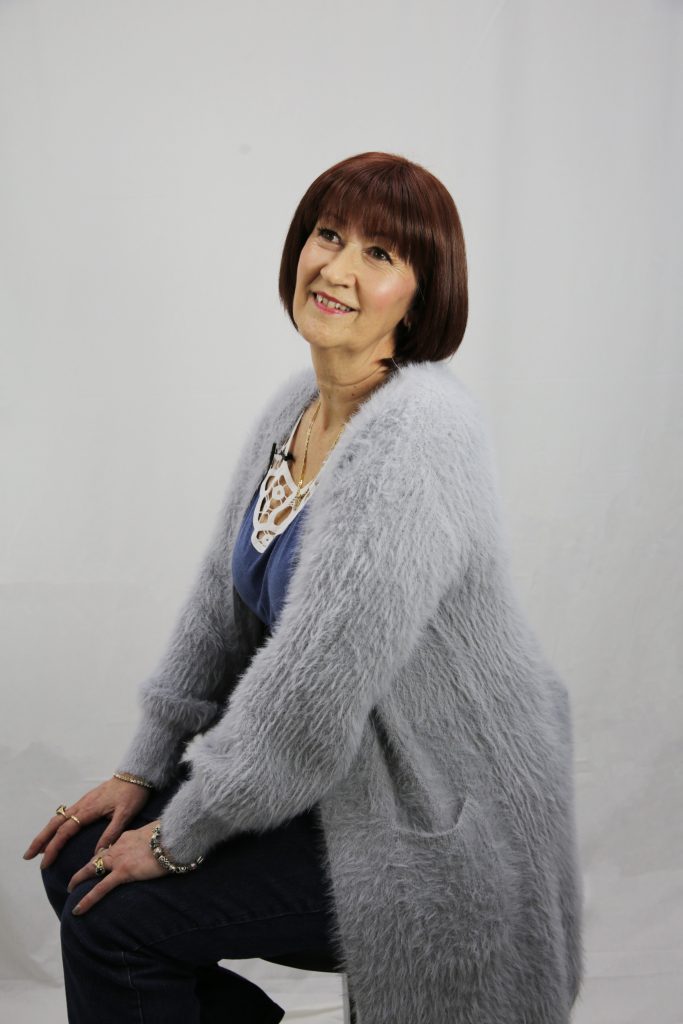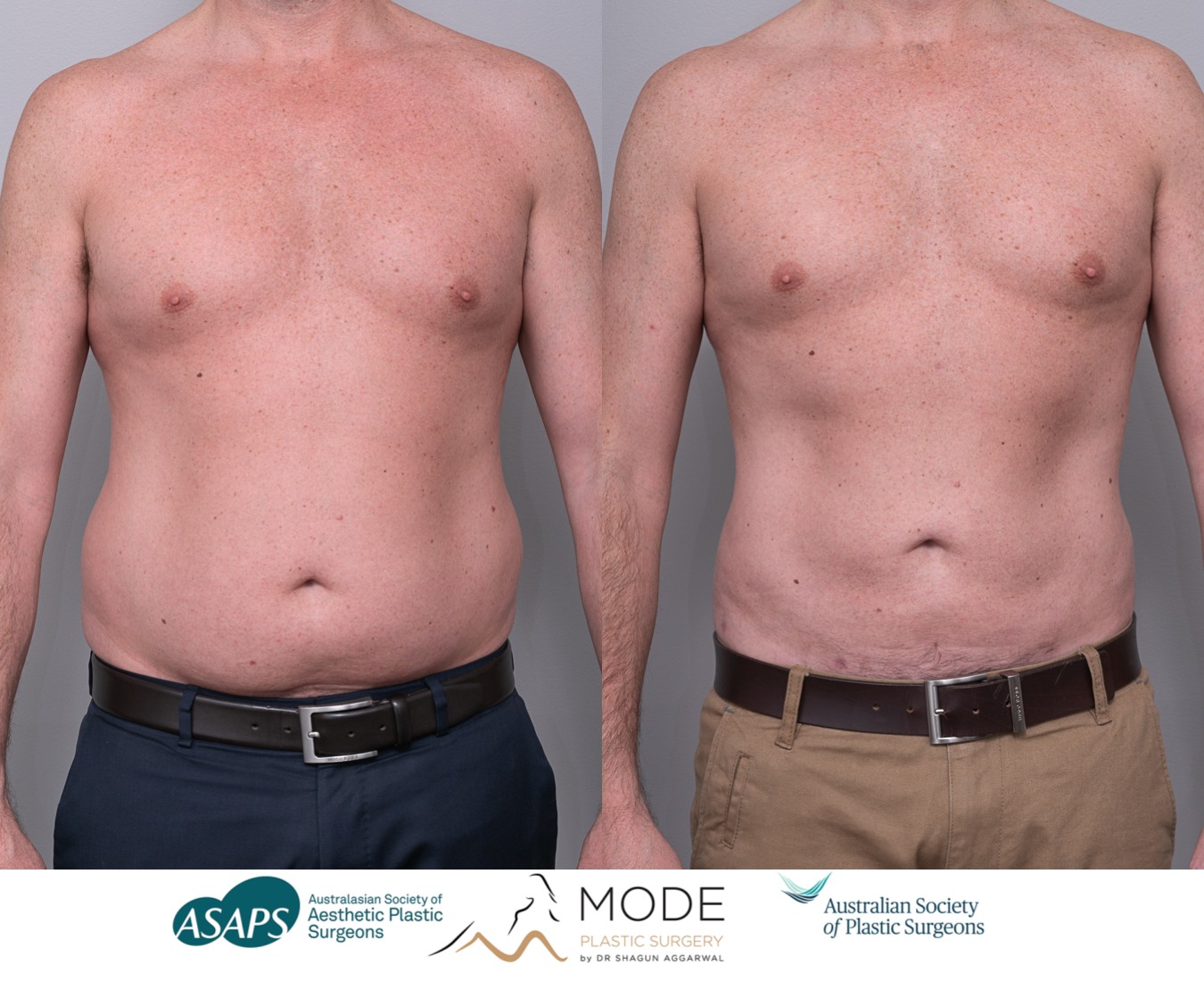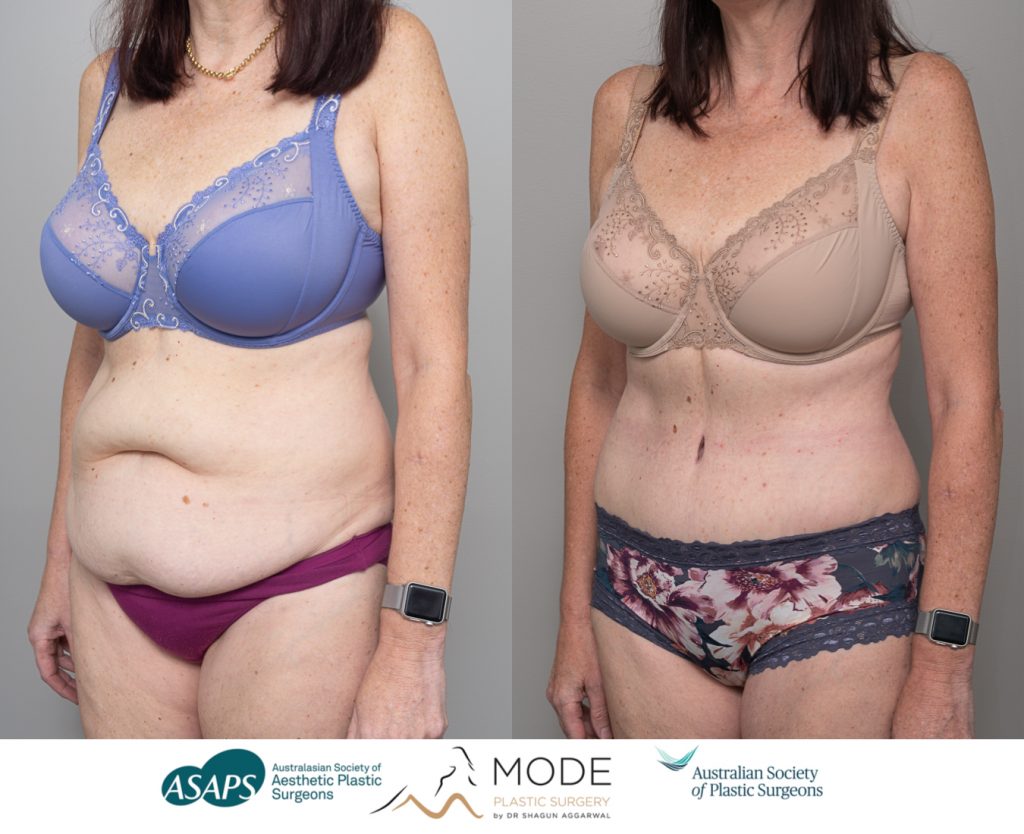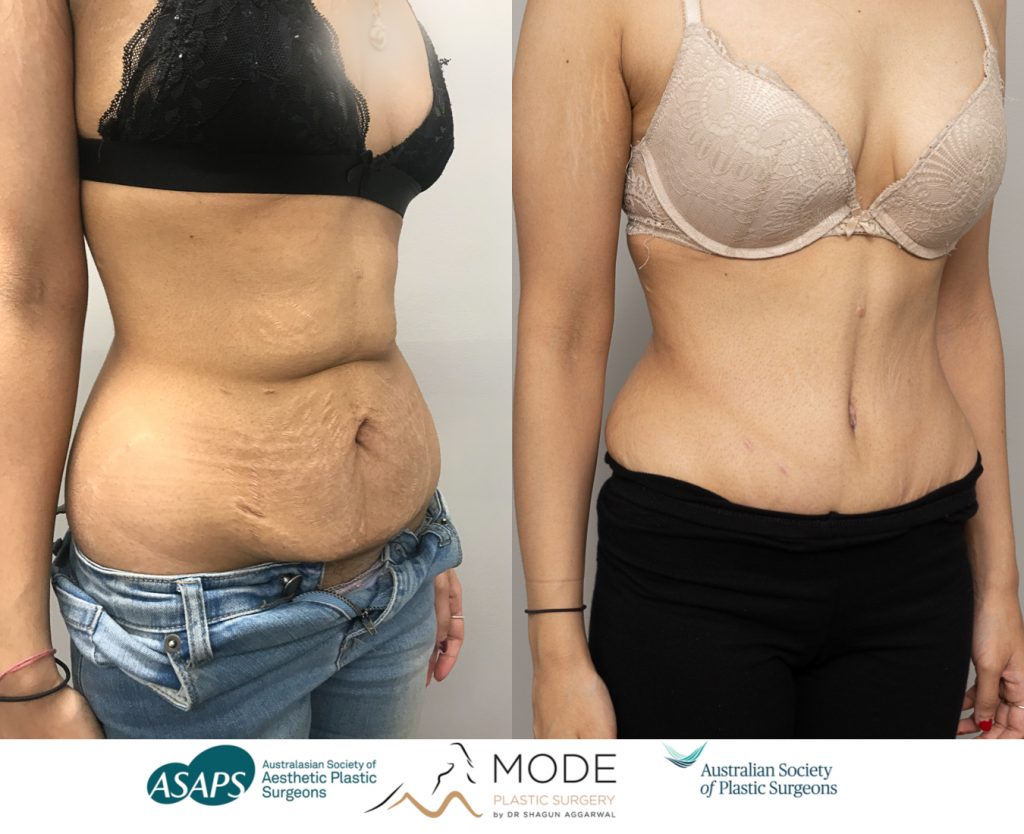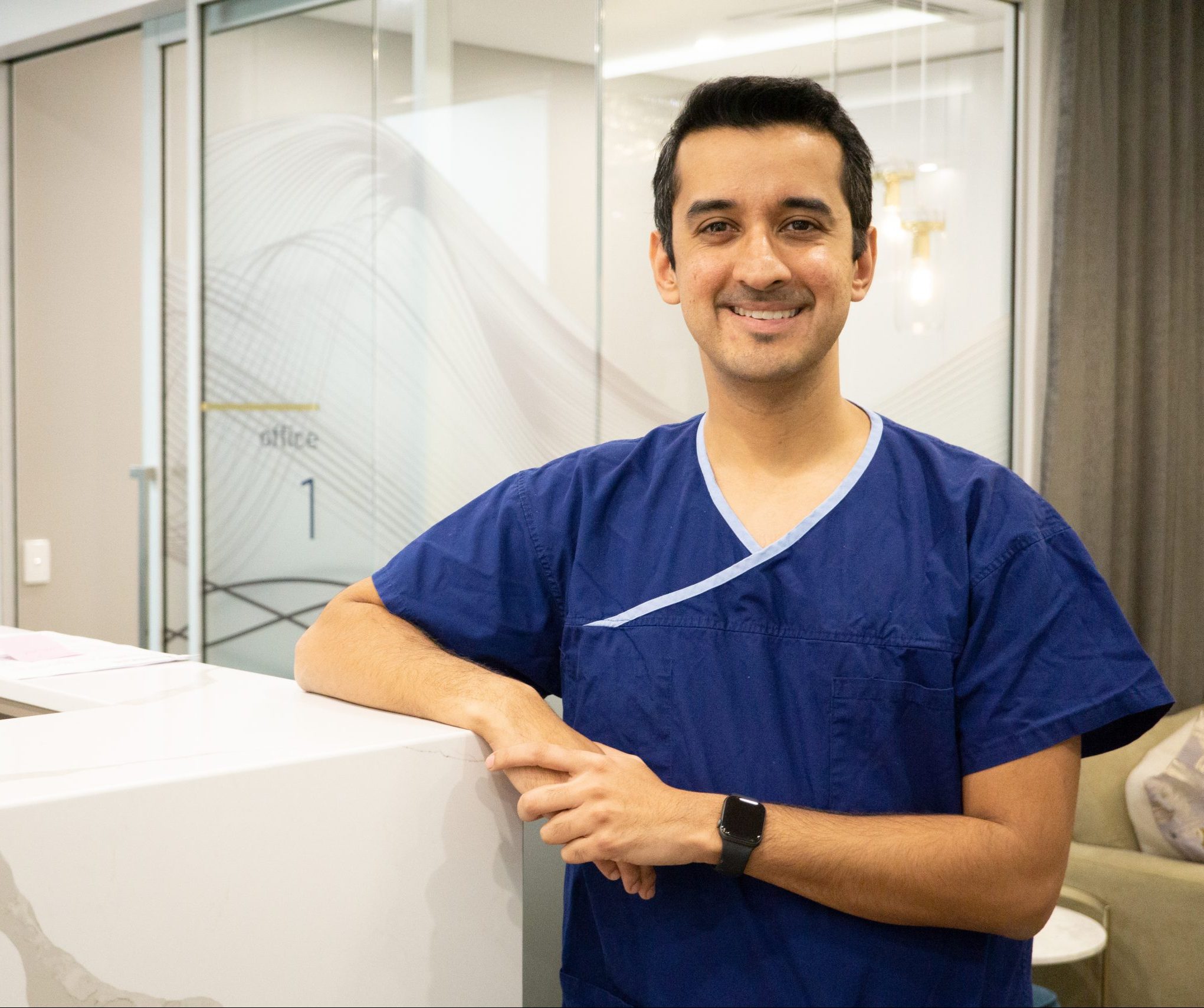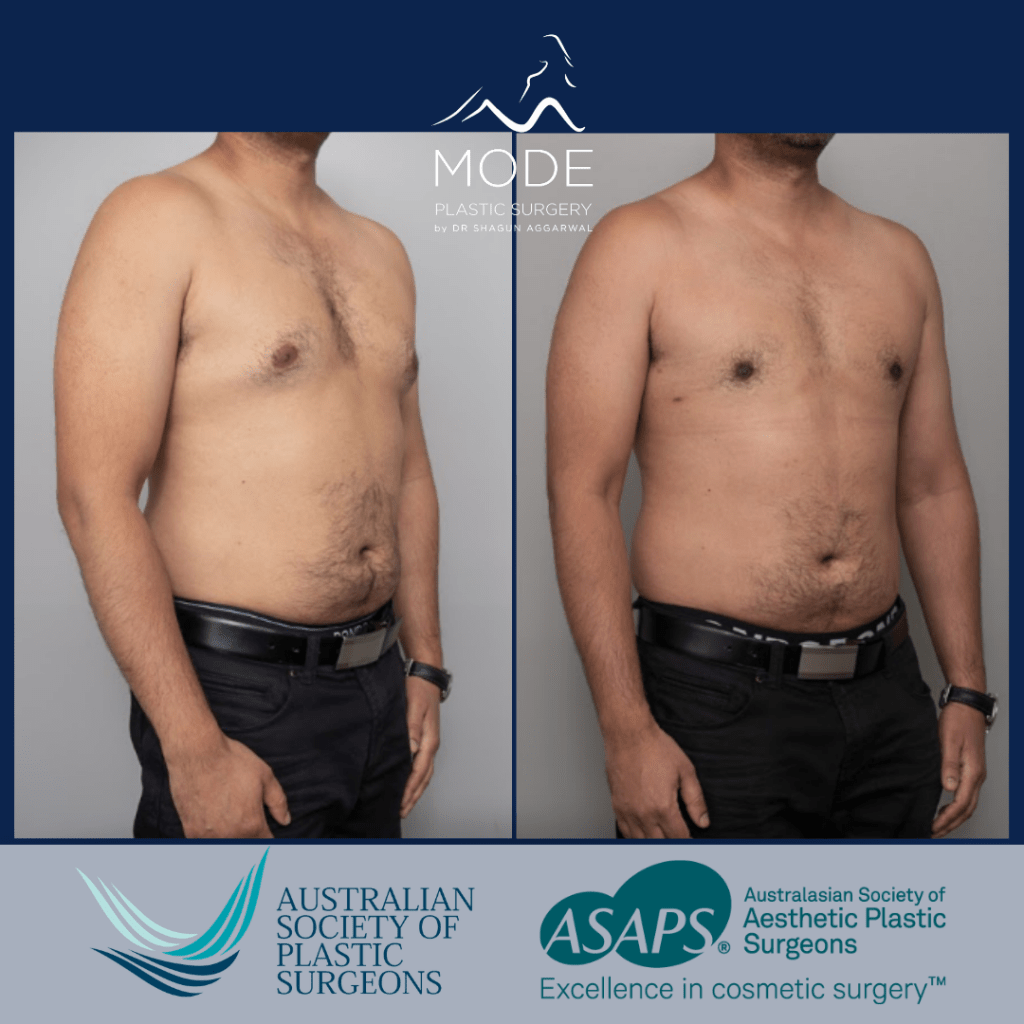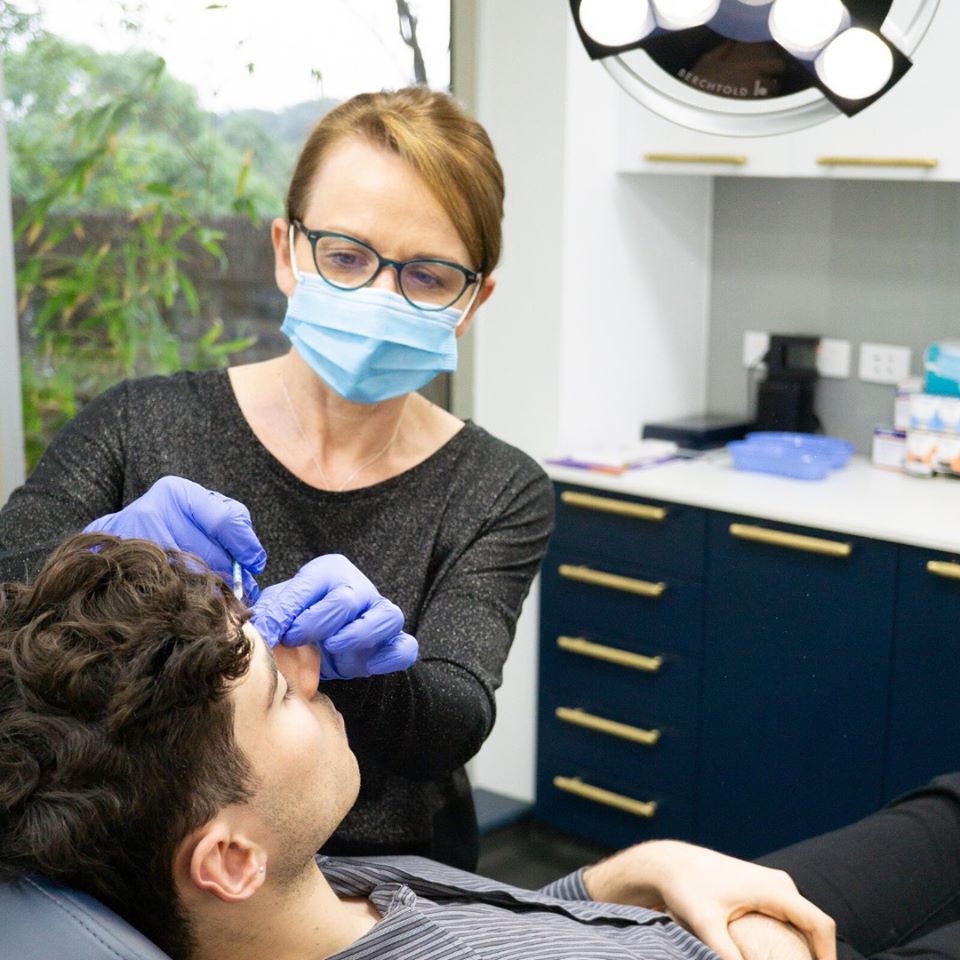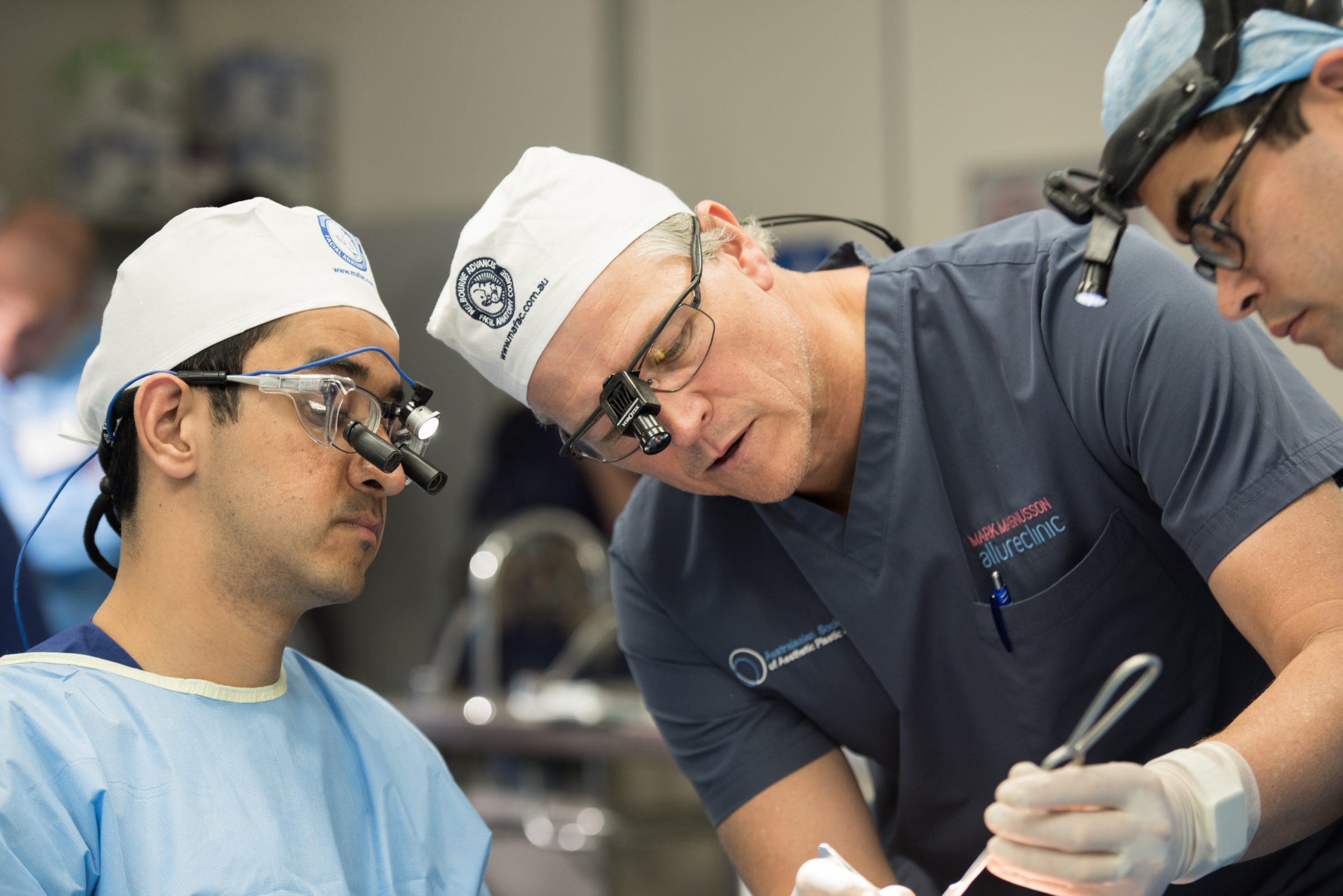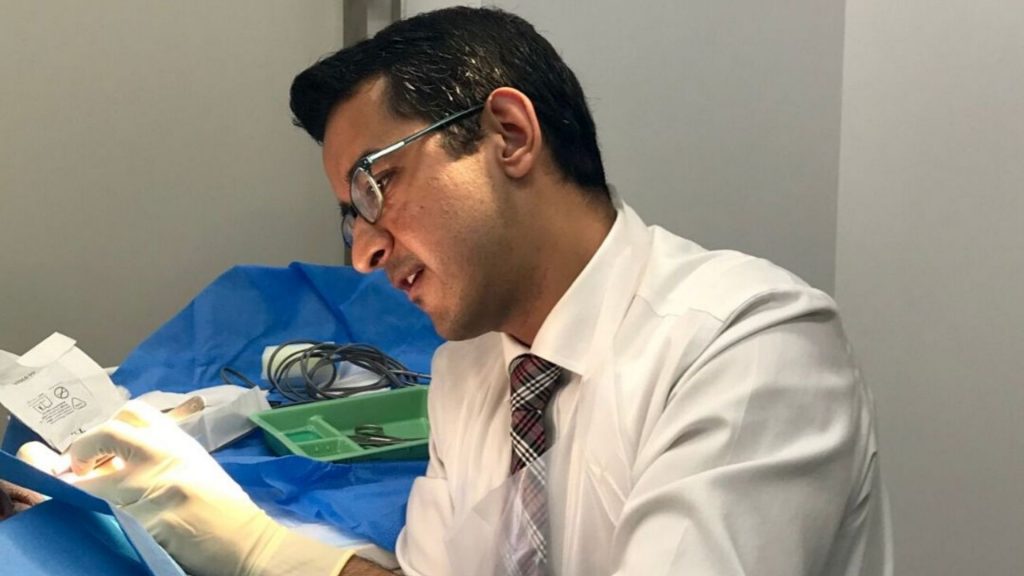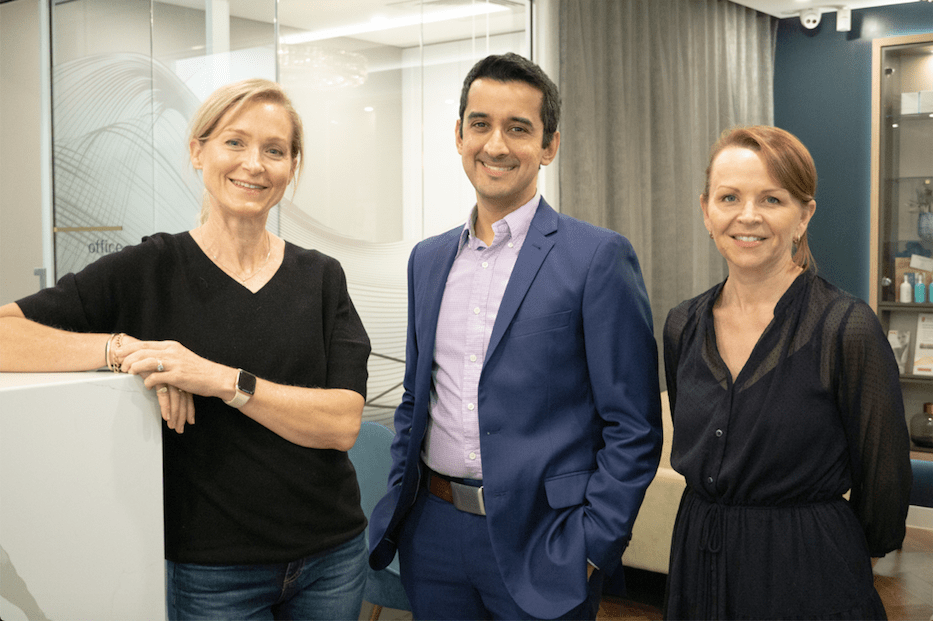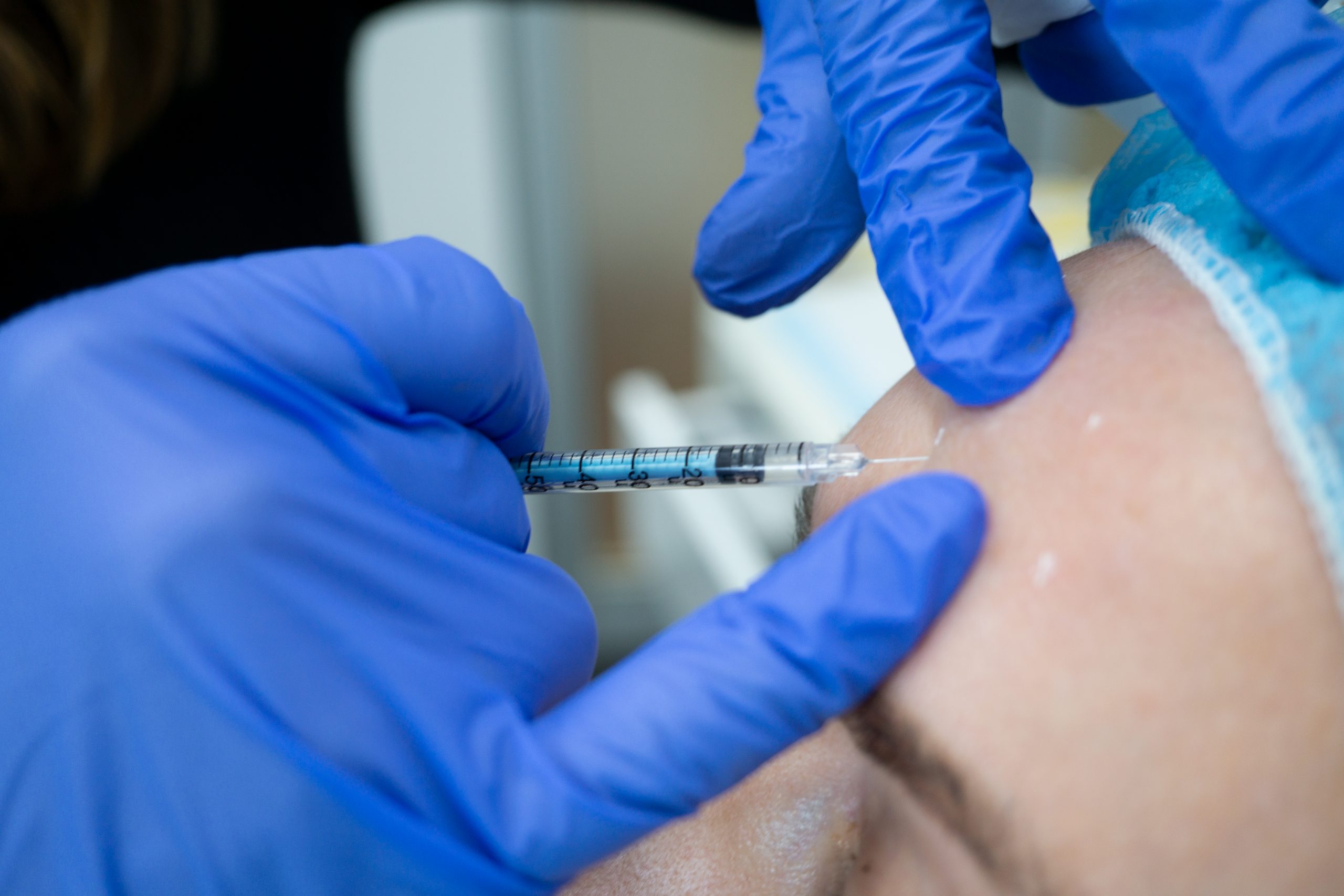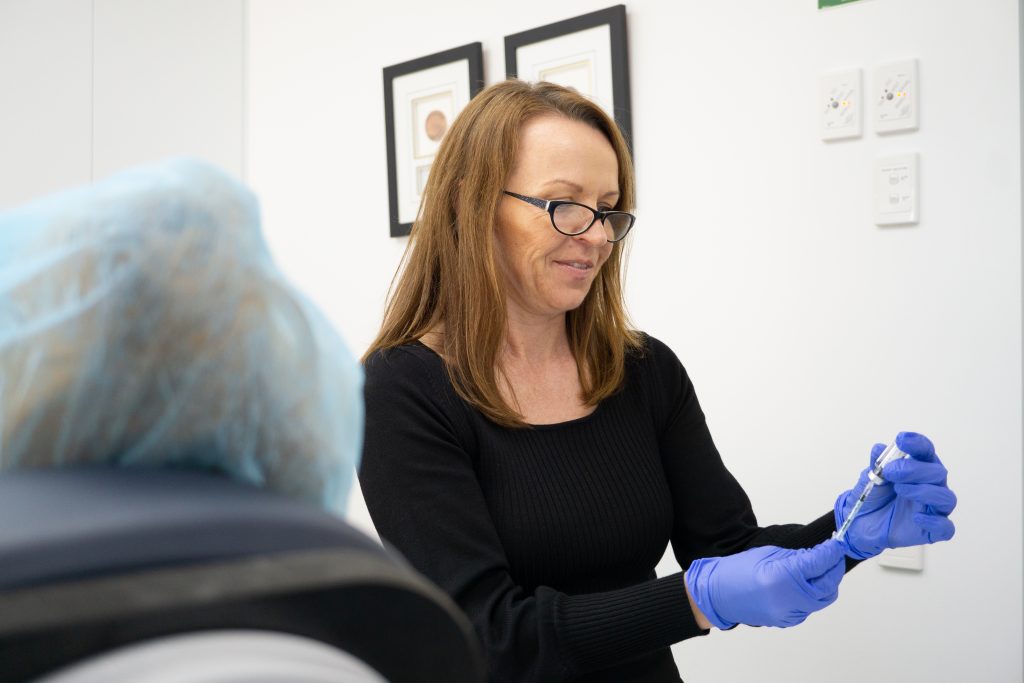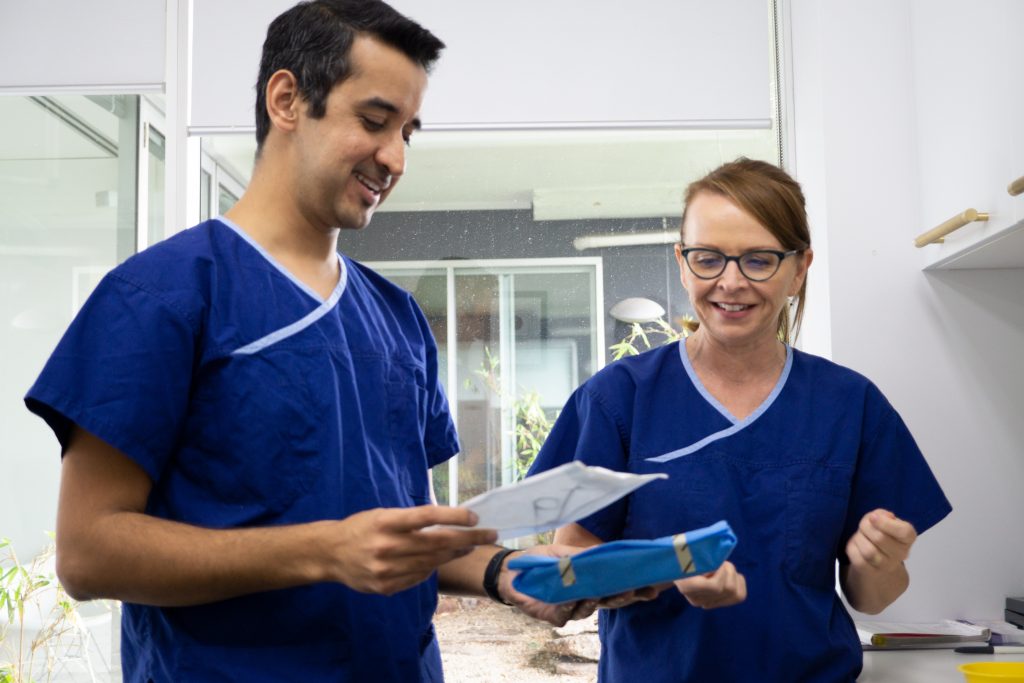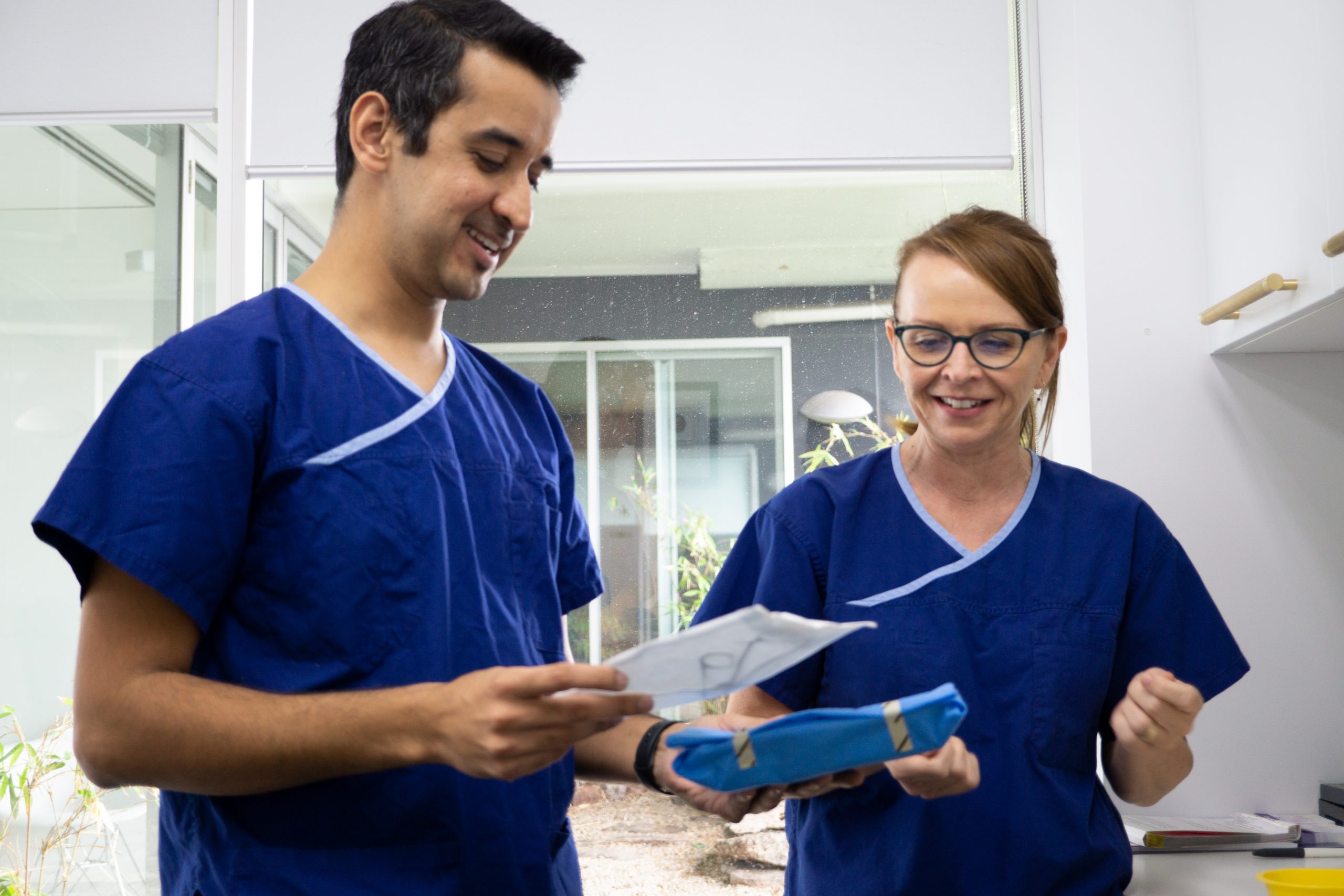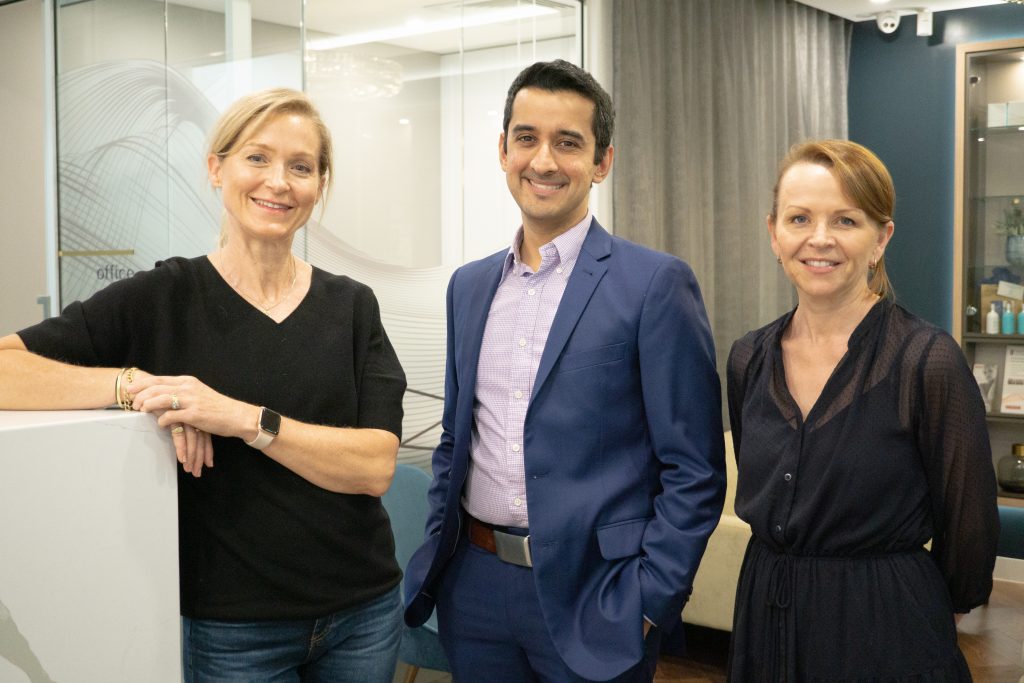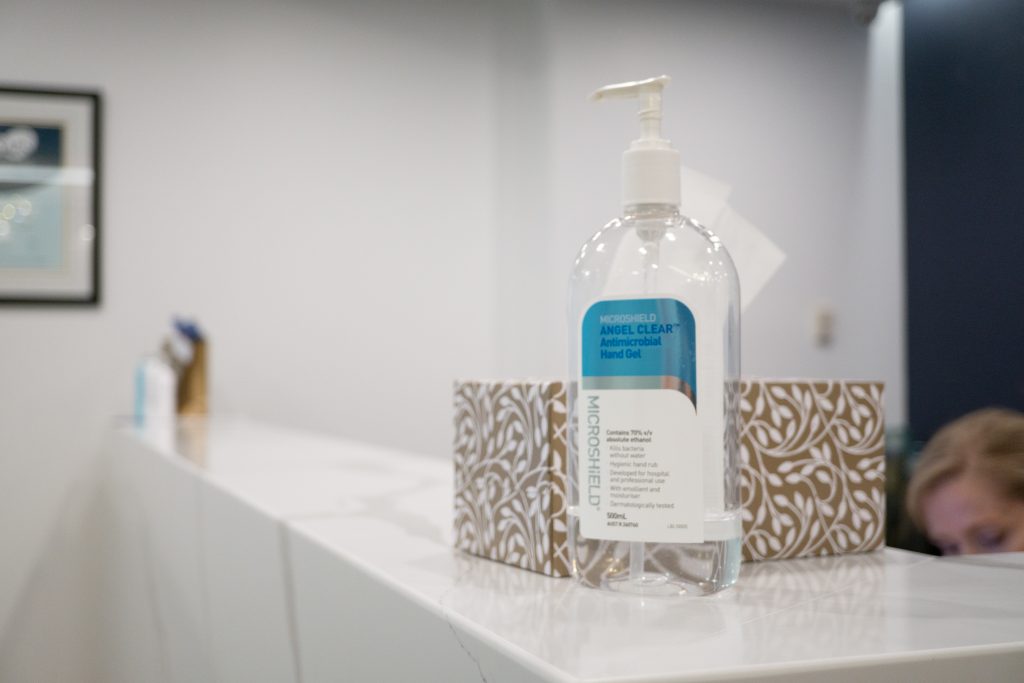Every year, October is Breast Cancer Awareness Month! For us at Mode, this is an important time for us – as breast reconstruction and breast cancer surgery is a core part of our practice – and thus this month is an opportunity to keep patients aware and up to date on the options available to them should they face this terrible disease.
In this post, we focus on DIEP flap or own tissue breast reconstruction.
What is DIEP flap reconstruction in Sydney?
DIEP flap reconstruction involves reconstructing a new breast, from tissue in the lower abdomen. The surgeon removes only the fat, skin, and blood vessels, leaving behind the muscle that belongs to the abdomen (the six-pack or rectus muscle).
DIEP stands for Deep Inferior Epigastric Perforators, these are the specific blood vessels within the abdomen that supply blood to the lower abdomen or tummy area. Typically a special CT scan called a CT Angiogram will be organised prior to surgery to determine whether the blood vessels in your abdomen are of sufficient size for this type of surgery.
So, how’s it all work? Well, an incision is made along the bikini line, and a portion (the flap) of the lower tummy fat and skin is removed along with its blood supply. This block of tissue (the flap) is then transferred to the chest, and the patient is left with a scar similar to that of a C-section (but it is longer). It’s effectively similar to having a tummy tuck (the slight difference in the scar being that it can sit a little higher than that of a tummy tuck).
The flap is then transplanted to the chest – this is perhaps the most interesting and most crucial part of the surgery. Blood vessels in the chest are found, and then the tiny blood vessels in the flap are connected to these chest vessels under a microscope.
Think of suturing two tubes under a high magnification microscope, and placing delicate sutures that are 100 times finer than a human hair delicately around these tubes to reconnect them! The flap is then formed into a breast shape with sutures under the skin. If a patient is having a unilateral, meaning one-sided procedure, then this is done on the one side.
Any tissue that is not used is discarded. In a bilateral, meaning double side reconstruction, most of the tummy tissue is needed and split in half, with blood vessels from each side of the tummy connected to each side of the chest- this obviously means the surgery is longer than just a one-sided reconstruction.
It’s this microscopic element of the procedure which is what makes it so phenomenal and creates amazing results. Any surgeon performing this procedure requires specialty surgical training, particularly to become an expert at the microscopic element of reattaching blood vessels – this is taught to all surgeons who go through Plastic Surgery Training, but only a few surgeons choose to specialise in this area. Those who practice this area, like Dr. Aggarwal, do so after having completed rigorous overseas fellowship training in microsurgery.
What are the aims of breast reconstruction?
The aim of breast reconstruction is to:
- Create a breast mound
- Look great in clothes (even tight-fitting dresses)
- Achieve symmetry with the opposite breast (in cases of one-sided or unilateral reconstruction)
- Avoid the use of a prostheses
What are the advantages of DIEP flap reconstruction?
The patients who have successfully undergone this surgery ‘sing from the rooftop’ (hopefully!) as there are some huge benefits of this surgery which include:
- A natural look and feel to the breast
- Breasts that are in proportion to the rest of their body
- Breasts will respond to the body as normal, such as fluctuating in size depending on weight gain or loss
- No need to compromise any necessary muscle (although in some people we may need to take a small piece of muscle due to the size of their blood vessels).
- A permanent reconstruction unlike implants that need to be changed every 10-15 years
- Aesthetic appearance that is difficult to match using implants
Where do I start if I am considering DIEP flap reconstruction?
The best thing you can do before your DIEP flap breast reconstruction is research. If you are looking up things online use reputable websites and it is good to do some background reading before booking a consultation.
When you do book a consultation, speak to a specialist plastic surgeon who specialises in this area. When researching your surgeon, check what experience they have, have they done fellowship training in the area, is this part of their regular work, and what do patients say about them (check reviews).
During a consultation, the surgeon should explain all the details of the surgery including:
- How the surgery is performed
- What to expect after surgery
- All potential outcomes, including possible complications and their solutions
- Show you before and after photographs of their work
- Discuss relevant costs
Perhaps the most important way to judge your surgeon is how they handle complications – how will you be looked after, will you have direct access to them, and will it cost more to treat complications (it should generally not!).
Another excellent way to prepare is talking and connecting with women who have undergone the procedure and speaking to them about their experience. A fantastic resource is on our Mode Instagram platform where we have documented many past patients’ experiences.
Do I need any special scans in preparation for DIEP flap surgery?
Yes, after a consultation Dr Aggarwal will typically ask you to obtain a special CT scan called a CT Angiogram – usually, this is organised at a specific radiology practice familiar with this type of scan and also obtaining the information that Dr Aggarwal needs. This scan located the blood vessels traveling through the tummy area, and supplying the tissue that will be used for reconstruction. In short, it is used to determine whether the blood vessels in your abdomen are of sufficient size for this type of surgery.
What is the difference between a DIEP flap and msTRAM flap? Can I be guaranteed that I will have a DIEP flap?
Ultimately both surgeries involve a transplant of the tissue from the lower abdomen/tummy area to the chest to reconstruct a beautiful breast. The key part of this procedure is the surgeon finding the blood vessels in the tummy and delicately dissecting and removing them and transplanting them to the chest.
If the blood vessels in the tummy are too small to keep the blood flowing to the tissue, then doing a DIEP flap is dangerous and can result in part or all of the flap not surviving the transfer – in these situations a small amount of muscle may be harvested as this keeps more of the blood vessels traveling from the muscle to the skin and fat needed for reconstruction.
Dr Aggarwal, who is very experienced in this area, will explain during a consultation how the decision is made, but the aim is always to take the minimum or no amount of muscle during surgery, as long as the safety of the flap transfer is not compromised.
We feel it is therefore difficult for any surgeon to ‘guarantee’ that a DIEP flap will be performed, as the decision regarding muscle or no muscle harvest depends completely on the size of blood vessels found at the time of surgery.
Why should I come to Mode Plastic Surgery for my DIEP flap reconstruction?
Here at Mode, Doctor Shagun Aggarwal performs all major surgeries including DIEP flap reconstructions. Dr Aggarwal is one of few plastic surgeons who is trained in both cosmetic surgery as well as reconstructive microsurgery – DIEP flap reconstruction is one of the passions of Dr Aggarwal, who trained in Sydney, and then sub-specialised in this area through further fellowship training at the University of Pennsylvania (UPenn, Philadelphia USA), and University of Toronto (Canada).
We feel you could therefore not be in better hands! Additionally, the hand-picked nurses and support team, Dr Aggarwal works closely alongside with are what make the surgical experience seamless and successful.
Mode Plastic Surgery has a reputation for professionalism but what we hold most highly is our commitment to patient wellbeing and their desired results. We would welcome you to read our reviews on independent websites or talk to our previous patients about their results and experience.
If you would like to read more about the reconstruction procedures we provide you can read more here:
Breast Reconstructive procedures
Breast Reconstruction Cost 2022
North Shore Breast Reconstruction



